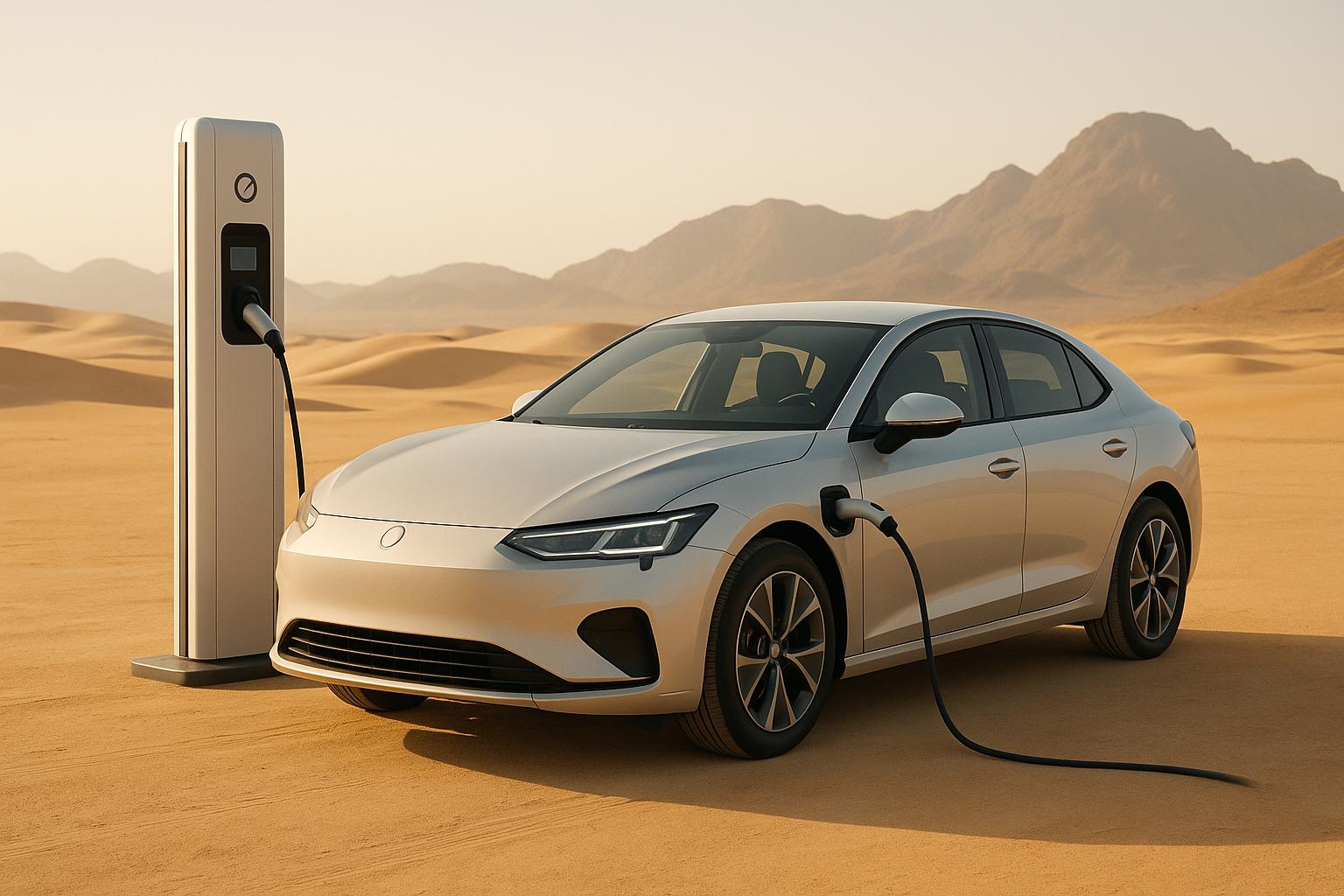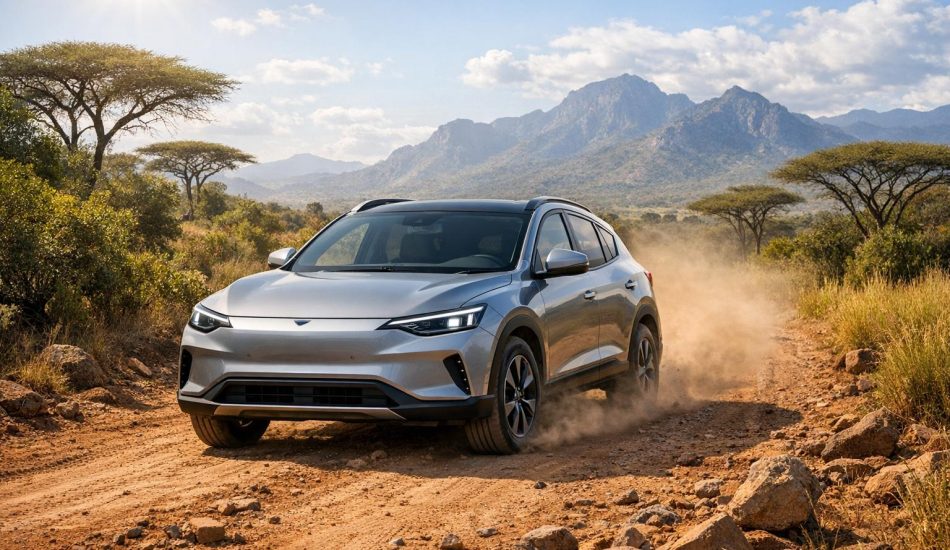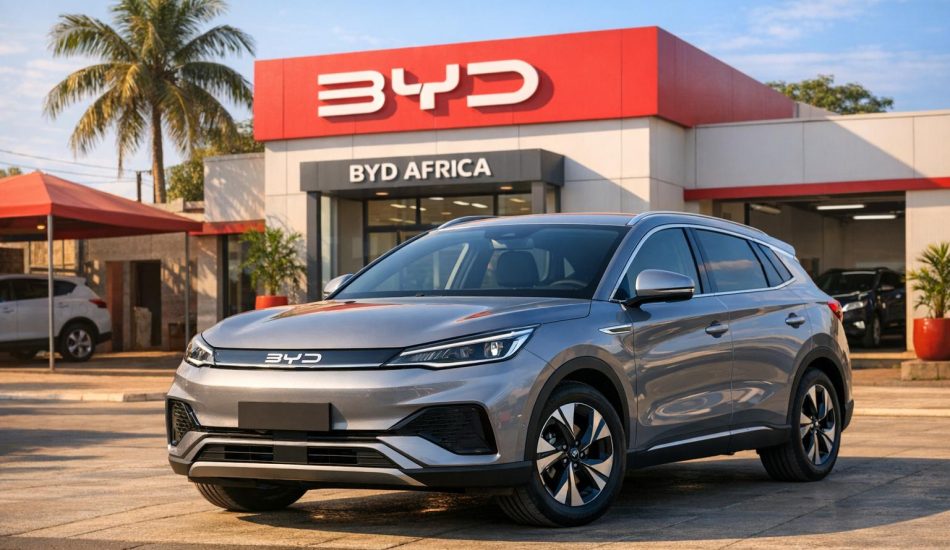
Libya’s electric vehicle (EV) market faces tough challenges but holds potential for growth. Despite frequent power outages, limited charging infrastructure, and high EV costs, efforts are underway to address these issues. Key government policies, like tax exemptions and subsidies, aim to make EVs more affordable. Companies are also exploring local manufacturing and better battery technology to reduce reliance on imports and lower costs. However, without major investments in charging networks and grid stability, widespread adoption remains uncertain. The future depends on resolving these critical barriers while building a reliable support system for EVs.
Market Overview and Current Status
Libya’s Car Market Today
Libya’s car market is a mix of established joint ventures and up-and-coming independent EV startups. Historically, gasoline-powered vehicles from international manufacturers have dominated the scene. However, the market is beginning to lean toward alternative mobility options, signaling a shift in consumer preferences.
EV Sales Growth Patterns
To understand how EVs are gaining traction, it’s important to look at the current market dynamics. While EV registrations are still in their early stages, there are signs of gradual adoption, especially in urban areas where infrastructure is slowly improving. Companies like EV24.africa are helping drive this change by offering both new and used electric vehicles, complete with detailed specifications, upfront pricing, and delivery services.
Main Companies and Market Competition
The automotive landscape in Libya is divided between large joint ventures that benefit from global partnerships and nimble independent producers and EV startups. Many companies are focusing on setting up local assembly plants, which not only boost domestic sales but also open doors for exports. At the same time, government initiatives – such as subsidies, charging station development, and dedicated parking spaces – are laying the groundwork for the growth of electric mobility.
Challenges to EV Adoption in Libya
Libya’s journey toward embracing electric vehicles (EVs) is riddled with hurdles, primarily stemming from infrastructure gaps and economic limitations. These obstacles affect both consumers and businesses, creating a challenging environment for EV adoption.
Missing Infrastructure
One of the biggest roadblocks is the lack of charging infrastructure, which is mostly concentrated in major cities. This scarcity makes long-distance travel and even daily commuting a source of concern for potential EV owners. Expanding the electrical grid to support fast-charging stations would require a significant financial commitment.
Additionally, Libya’s EV market heavily relies on imports for both vehicles and charging equipment, as local manufacturing and assembly capabilities are still in their infancy. This dependency not only inflates costs but also creates supply chain vulnerabilities. Complicating matters further, Libya’s population is widely dispersed across vast areas. With major cities separated by long distances and rural regions often lacking basic electrical infrastructure, building a reliable and accessible charging network becomes an even greater challenge.
These infrastructural issues also tie into more widespread power supply concerns.
Power Supply Problems
Frequent power outages and an unstable electrical grid present another major challenge. These issues make charging electric vehicles unreliable, particularly for drivers who depend on overnight charging at home. Such unpredictability could undermine consumer confidence in EVs as a practical transportation option.
Moreover, when grid instability forces reliance on backup generators or other fossil fuel-based solutions, the environmental advantages of EVs are diminished. Without advancements like smart charging systems or grid modernization, the added demand from an increasing number of EVs could strain the already fragile power supply even further.
Beyond infrastructure, economic factors create additional barriers to EV adoption.
High Costs and Limited Financing
The high upfront cost of EVs remains a significant deterrent for Libyan consumers. Since most EVs and their components are imported, prices are heavily influenced by currency fluctuations and inflation, making them even less accessible. This import dependency drives up costs, leaving many potential buyers unable to afford an EV.
Financing options for EV purchases are also scarce. Traditional auto loans are often difficult to secure, and there are few, if any, tailored financing programs for electric vehicles. On top of that, hidden expenses like maintenance can further discourage buyers. While the government has occasionally announced subsidies and incentives, inconsistent implementation means that these financial supports are unreliable.
These economic challenges directly affect consumer willingness to invest in EVs, making it clear that Libya has a long way to go before electric vehicles can become a mainstream choice. Together, the infrastructure and economic barriers paint a complex picture of the obstacles standing in the way of EV adoption in the country.
sbb-itb-99e19e3
Growth Opportunities and Solutions
Libya’s EV market is navigating infrastructure and financial challenges through a range of strategic initiatives aimed at breaking down barriers and opening doors for expansion. These efforts are setting the stage for broader adoption and a more robust market.
Government Support and Tax Incentives
The Libyan government has rolled out measures to make EV adoption more appealing and affordable. Key initiatives include subsidies for replacing old vehicles and a complete exemption from VAT and customs duties for fully electric models. These steps significantly lower the cost of ownership and encourage more consumers to go electric. Additionally, the government is working on expanding the EV charging network and increasing designated parking spaces as part of its long-term development goals. Current import regulations also favor modern EV technology by requiring vehicles to meet EU Euro 4 emission standards and prioritizing models that are 5–10 years old. Together, these policies have fueled strong growth in the EV sector, with double-digit increases in adoption rates.
Innovative Business Models
To tackle financial and accessibility challenges, new business models are making EVs more attainable for Libyan consumers. For instance, platforms like EV24.africa streamline the purchasing process by offering clear pricing, end-to-end shipping and customs services, and flexible payment options. These platforms even deliver to 54 African countries, eliminating many of the traditional headaches associated with importing vehicles. Meanwhile, the rise of e-commerce and logistics is driving demand for commercial EVs, especially for last-mile delivery services, creating fresh opportunities in the market.
Advances in Technology and Local Manufacturing
Technological improvements and local production efforts are further reshaping Libya’s EV landscape. Innovations such as range extenders and better battery technology are addressing concerns about driving range and reliability – key issues given Libya’s vast geography. Local manufacturing is also gaining traction, reducing dependency on imports and cutting costs by avoiding tariffs and shipping fees. Partnerships with foreign automakers are bringing advanced technologies to the region while building local expertise. Additionally, investments in research and development are enhancing product quality and making Libyan-made EVs more competitive. However, challenges like reliance on imported semiconductors and ongoing chip shortages remain. To overcome these hurdles, increased investment in local R&D, infrastructure, and workforce training is critical. These steps not only address current bottlenecks but also position Libya to tap into growing international demand and expand its export potential.
The Future of EVs in Libya
Libya’s electric vehicle (EV) market is at a turning point, with its future hinging on tackling the pressing issue of limited charging infrastructure. Without addressing this key challenge, widespread adoption remains out of reach.
A robust infrastructure development plan is critical to long-term progress. Libya must prioritize significant investments in charging stations to overcome current roadblocks. This effort should go hand in hand with urban planning, incorporating charging facilities into new developments and creating designated parking areas equipped with chargers. Without these foundational upgrades, even the most enticing government incentives won’t be enough to encourage mass adoption.
But solving the infrastructure problem isn’t just about pouring money into projects. A more comprehensive approach is required – one that blends government leadership with private sector ingenuity. Regulatory measures and incentives specifically designed to attract investment in EV charging networks and advanced battery technologies will play a key role. With the government already focusing on broader infrastructure upgrades, such as modernizing road systems and urban areas, there’s a golden opportunity to integrate EV-compatible infrastructure from the start.
In addition to infrastructure, local manufacturing and innovation are crucial for making EVs more accessible to Libyan consumers. Establishing local assembly plants and encouraging homegrown EV startups can create cost-effective options for the domestic market. Building research and development capabilities, particularly in battery technology, could yield solutions tailored to Libya’s specific needs while enhancing product quality and competitiveness.
Bringing EV supply chain production to Libya – including manufacturing battery cells and components – can offer several strategic benefits. It would reduce reliance on imports, shield the market from global supply chain issues like semiconductor shortages, and lower overall costs. This approach not only makes EVs more affordable for everyday consumers but also fosters local expertise and job creation.
For Libya to realize its EV potential, three key areas need sustained attention: infrastructure development, supportive government policies, and a strong local manufacturing base. Together, these efforts can pave the way for a thriving EV market in the country.
FAQs
What challenges does Libya face in building a reliable EV charging network?
Libya is grappling with a range of obstacles in building a dependable EV charging network. One of the key challenges is the absence of clear government policies to guide and promote the growth of EV infrastructure. Without these policies, creating a supportive environment for electric vehicles becomes an uphill battle.
Another significant issue is the limited availability of affordable EVs, which hampers widespread adoption among consumers. Even for those interested in making the switch, the high costs act as a deterrent.
The situation is further complicated by the uneven distribution of charging stations, leaving many regions without access. This lack of coverage makes it harder to encourage nationwide EV use. On top of that, energy reliability problems add to the difficulty, as many parts of the country still face unstable power supplies, making consistent EV charging impractical.
Addressing these challenges will demand careful planning, targeted investments, and solutions designed specifically for Libya’s unique circumstances.
What steps is the Libyan government taking to promote electric vehicles?
The Libyan government is taking steps to promote the use of electric vehicles (EVs) by introducing several supportive initiatives. Starting in 2025, fully electric cars will be exempt from both VAT and customs duties, making it easier and more affordable for consumers to import EVs.
In addition to tax breaks, the government is focusing on upgrading infrastructure and encouraging EV adoption. Plans include offering subsidies to help replace older, less efficient vehicles and investing in critical upgrades like charging stations to fill existing infrastructure gaps. These measures are designed to make Libya more EV-ready while addressing the country’s specific needs and opportunities.
How can local manufacturing make electric vehicles more affordable and accessible in Libya?
Local manufacturing has the potential to bring down the cost of electric vehicles (EVs) in Libya by cutting out hefty import-related expenses and fostering job creation. By producing EV components or assembling the vehicles within the country, manufacturers can sidestep high shipping costs, tariffs, and taxes that come with importing fully built vehicles. This could make EVs more affordable and appealing to Libyan buyers.
Beyond cost savings, local production could also give a boost to the economy by creating jobs in manufacturing, logistics, and related sectors. Over time, this could help develop a skilled workforce and attract more investment in EV-related infrastructure, like charging stations. These advancements would make EVs not only more affordable but also more practical for everyday use across Libya.




